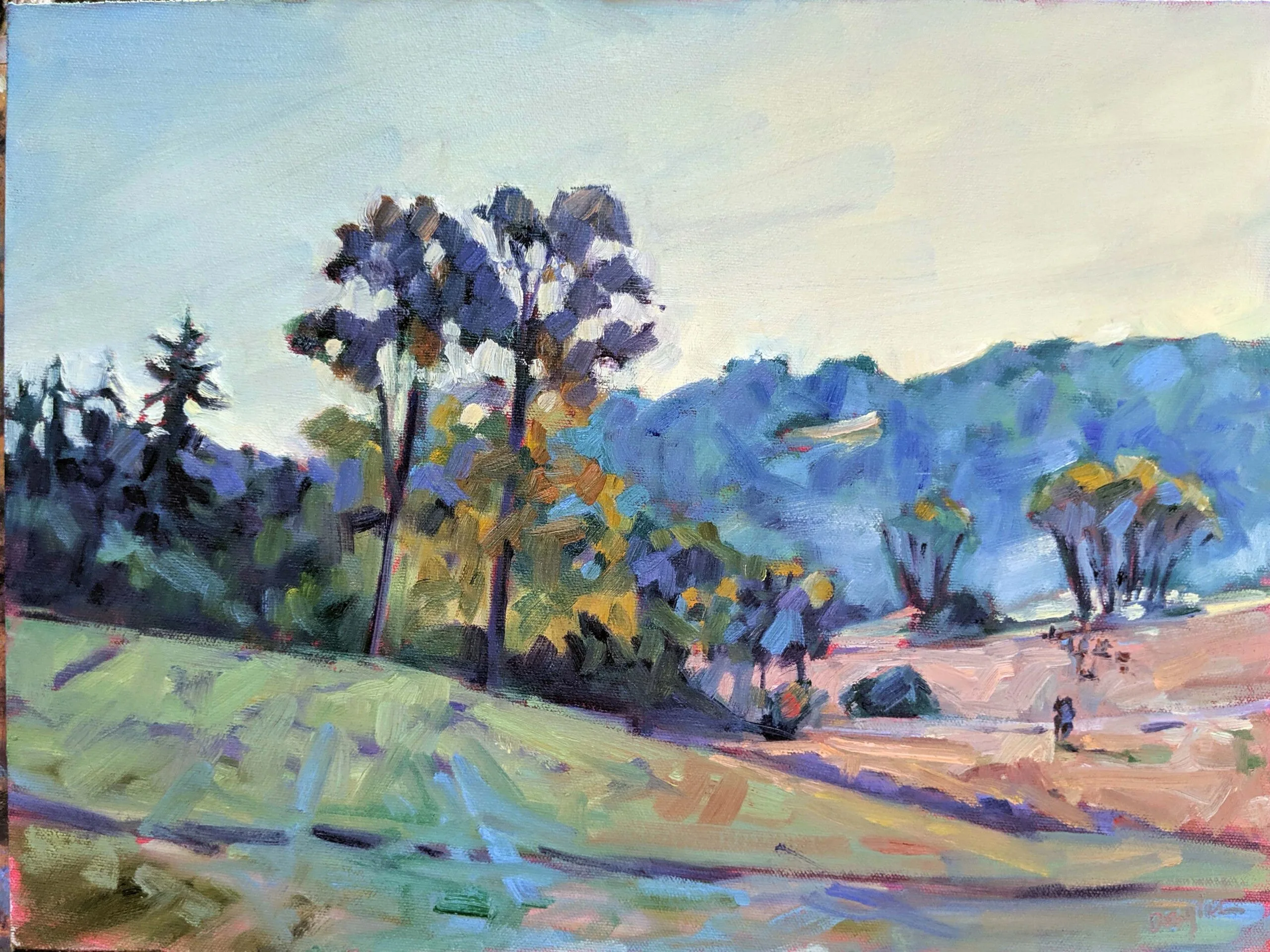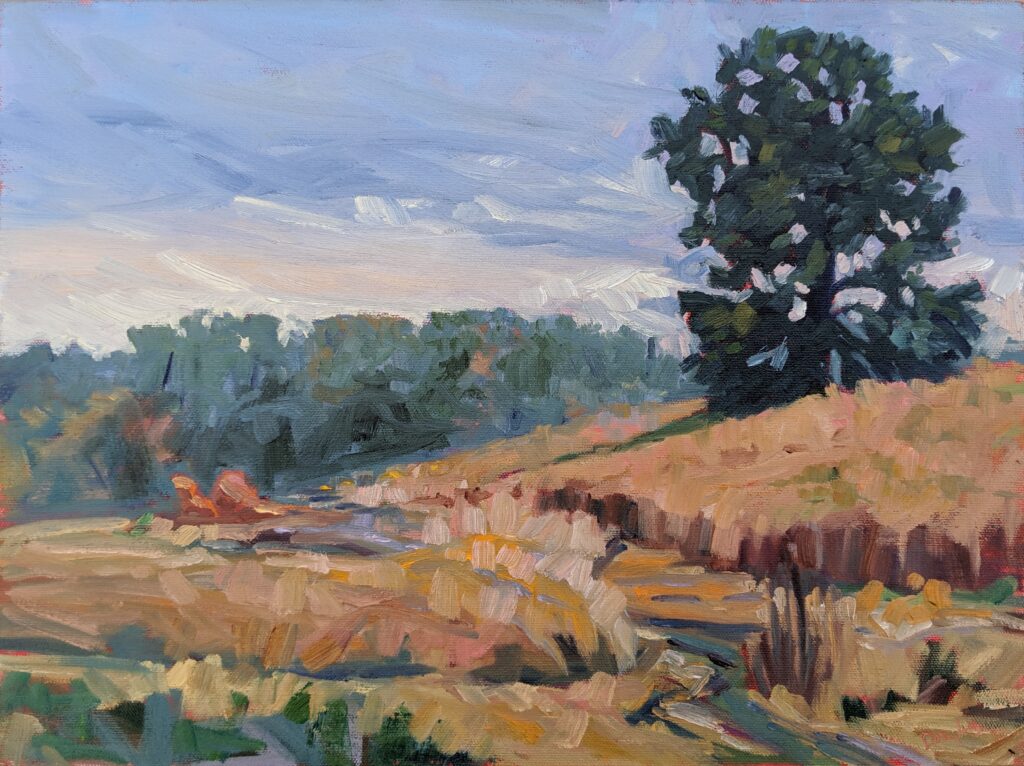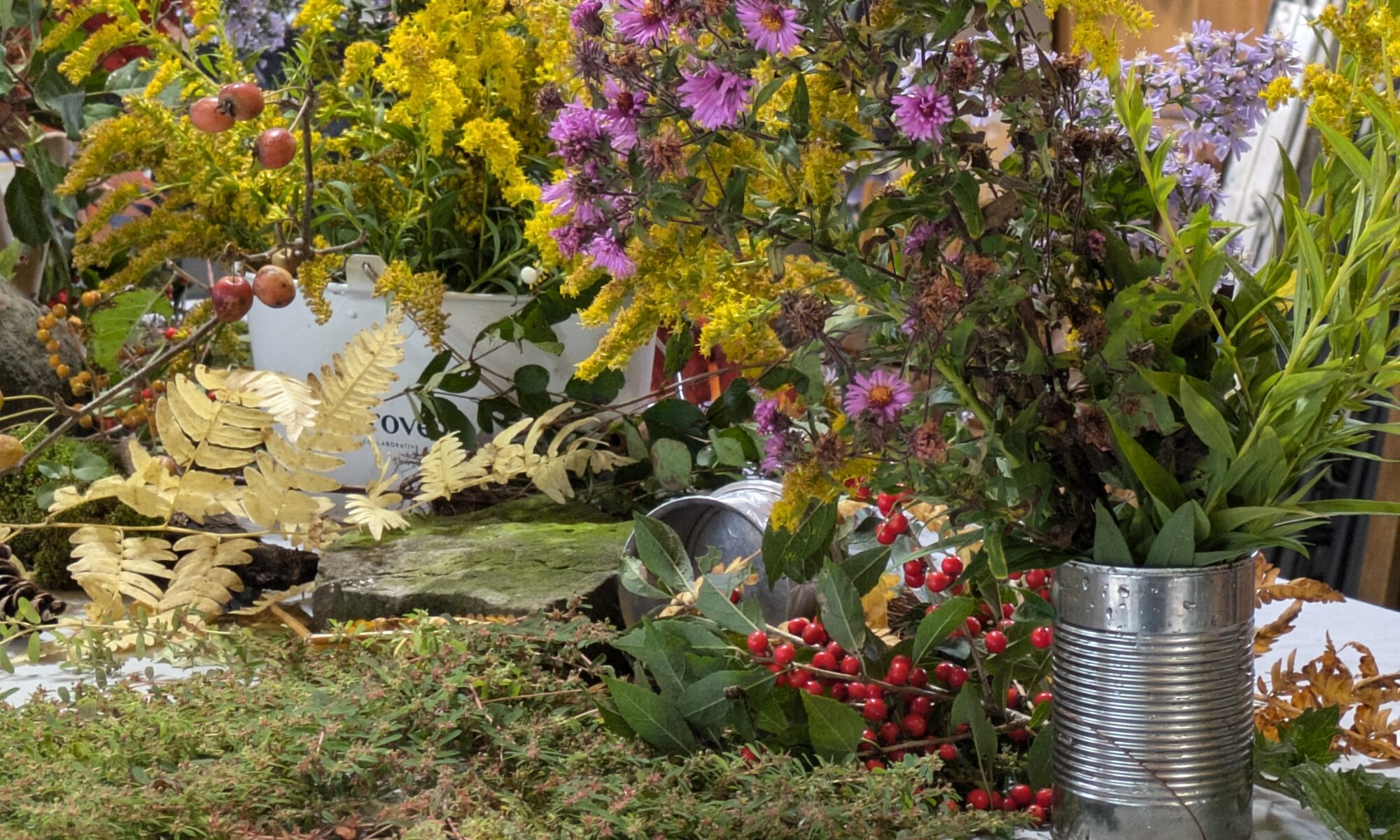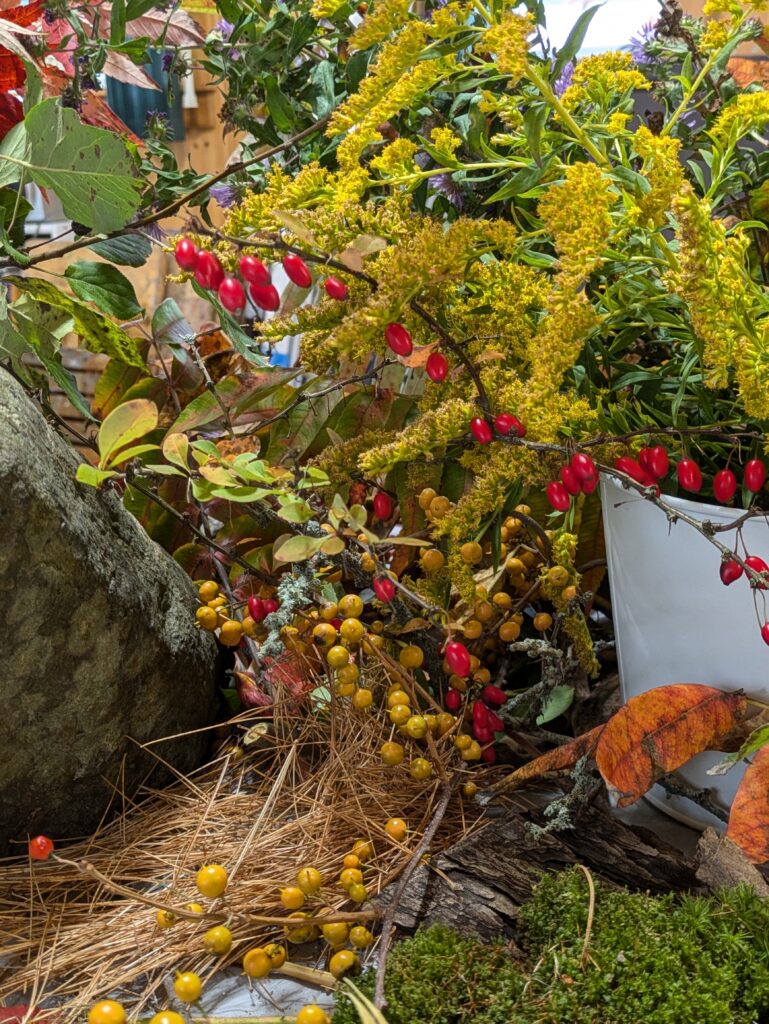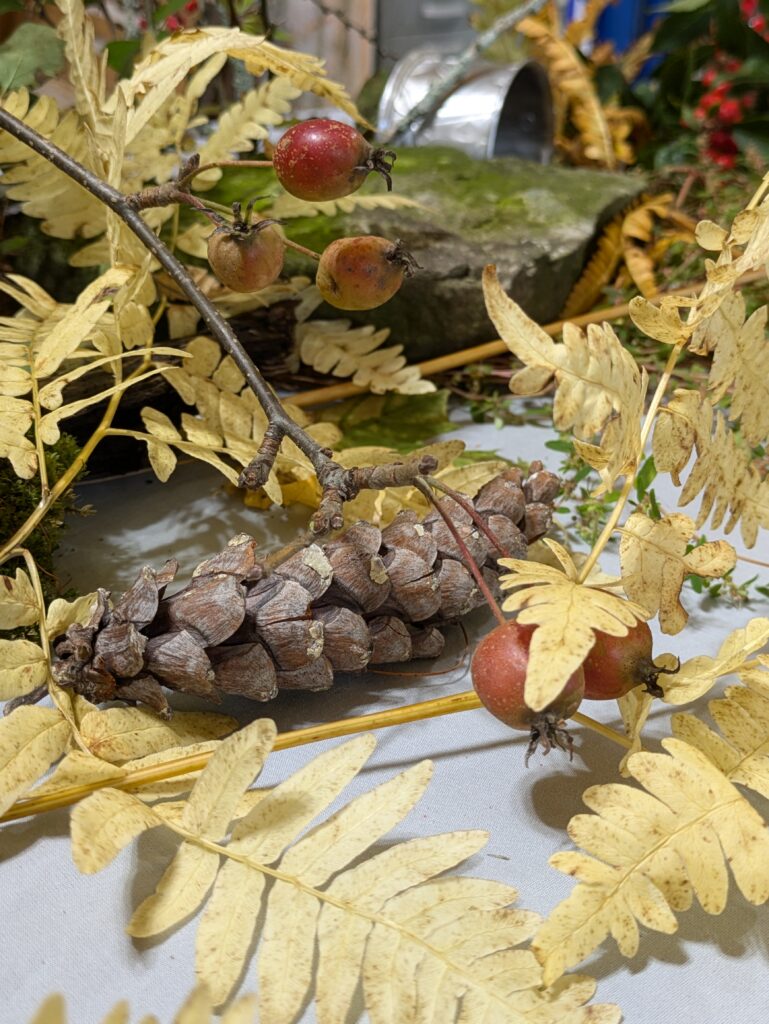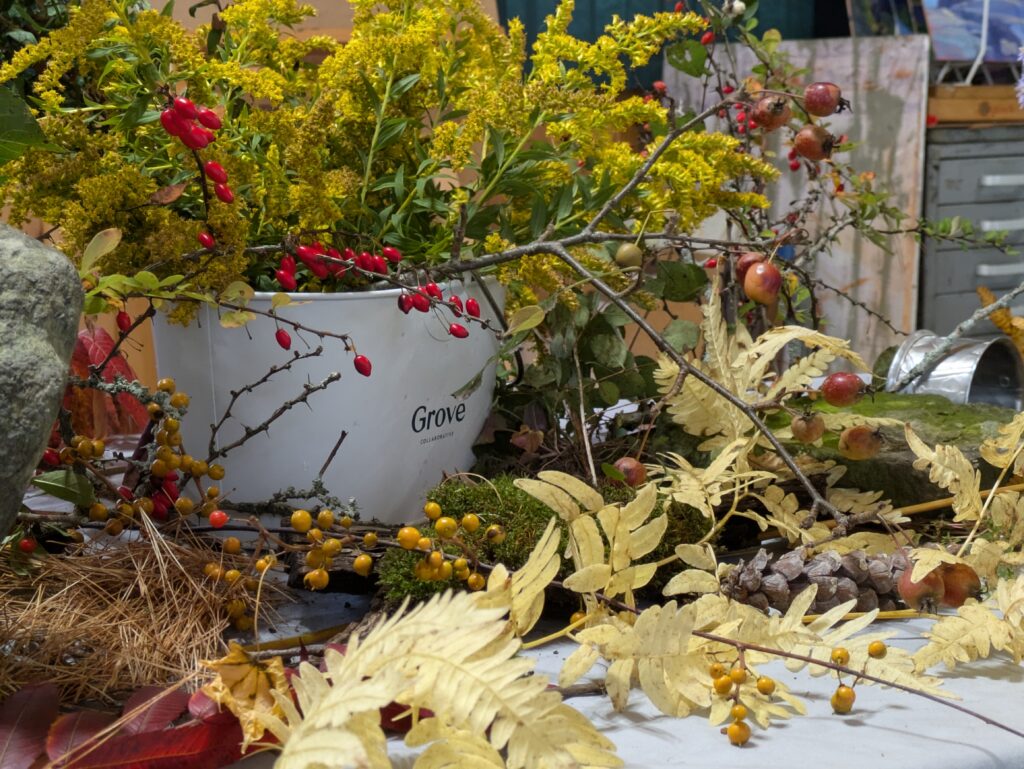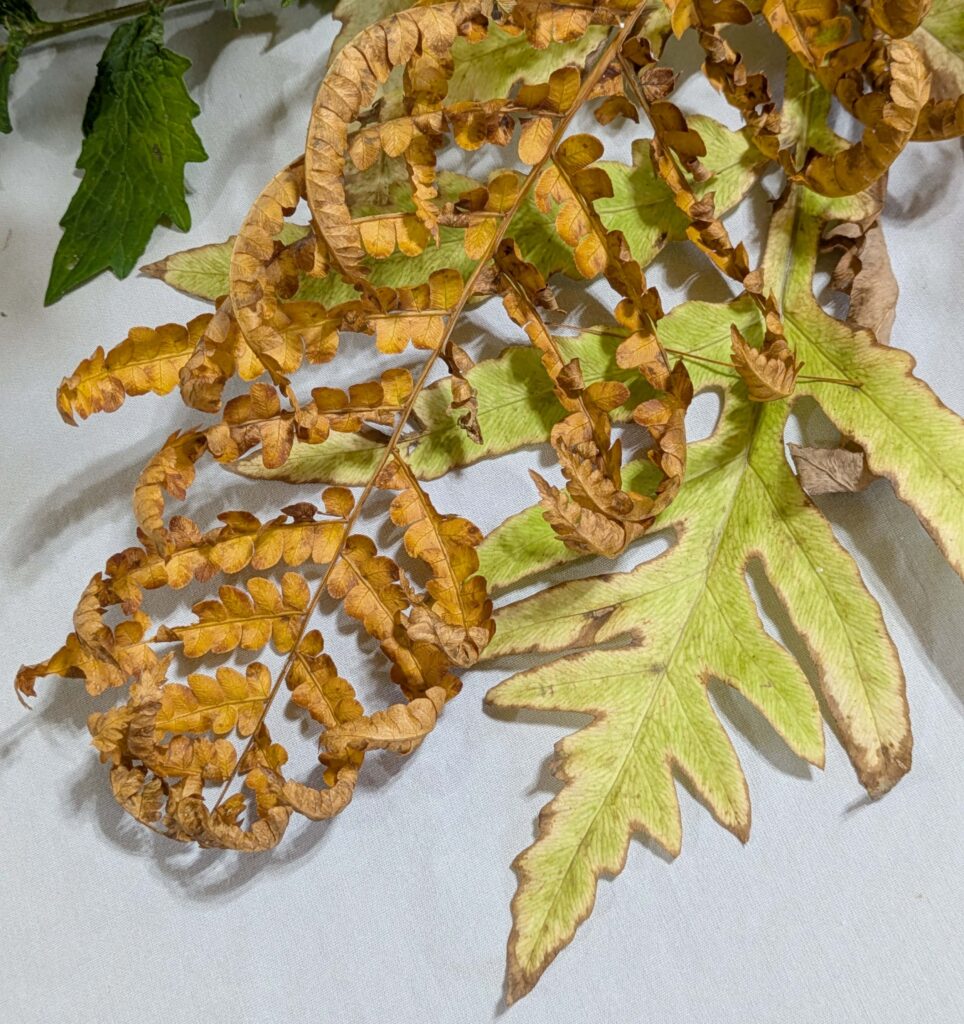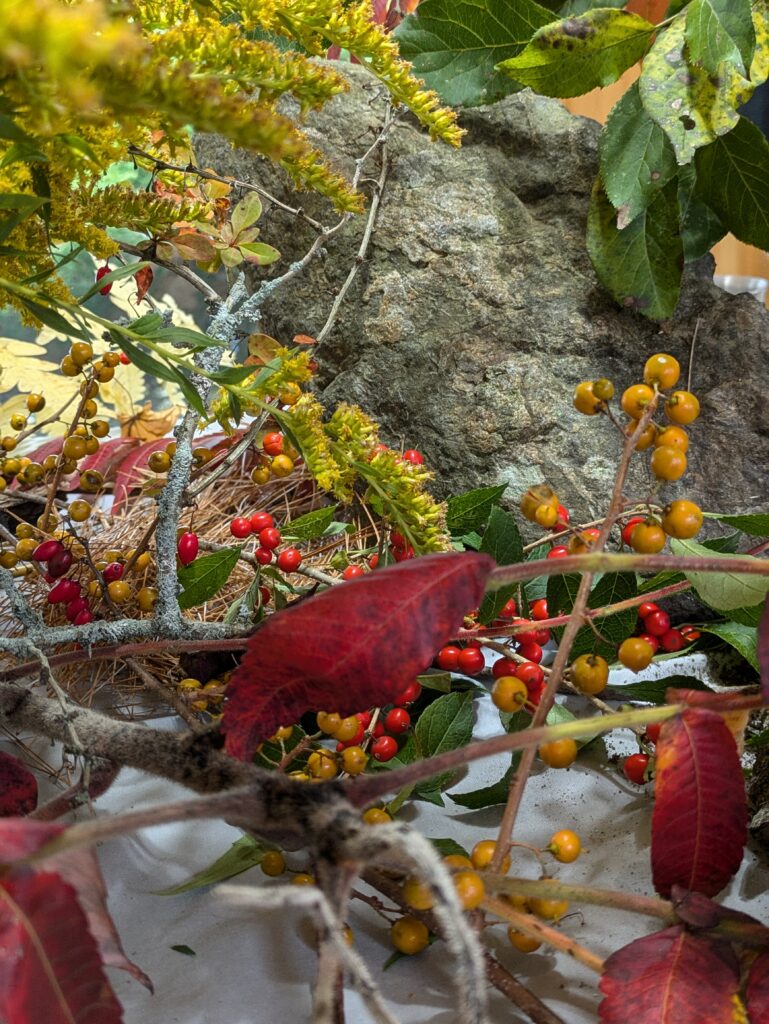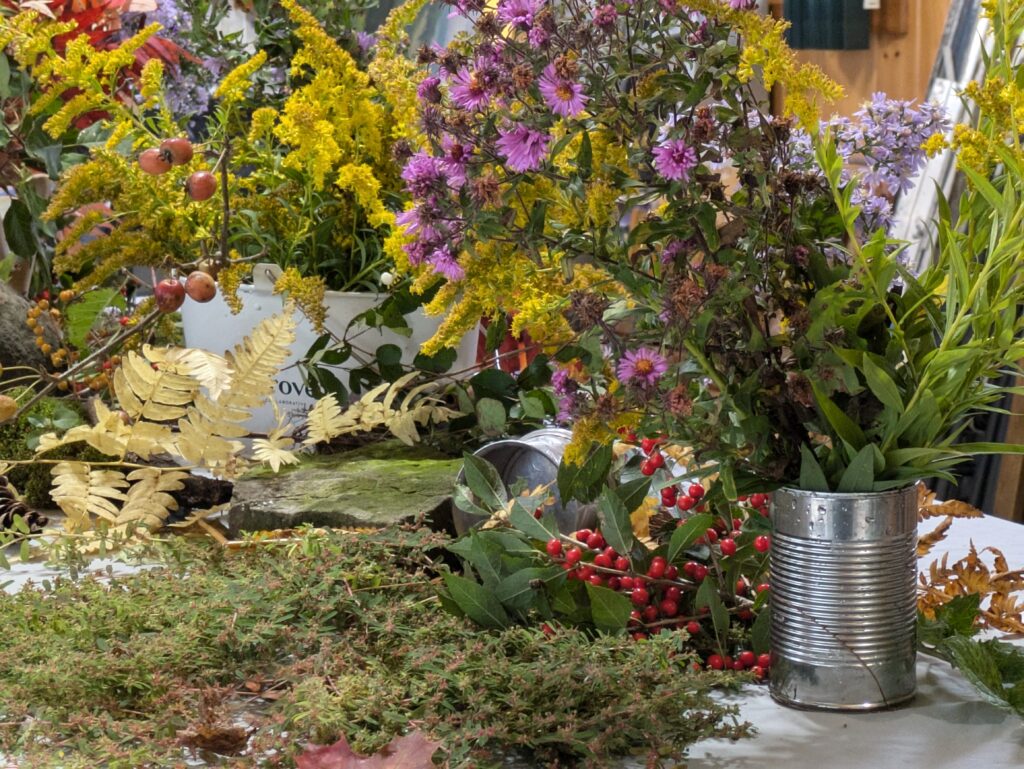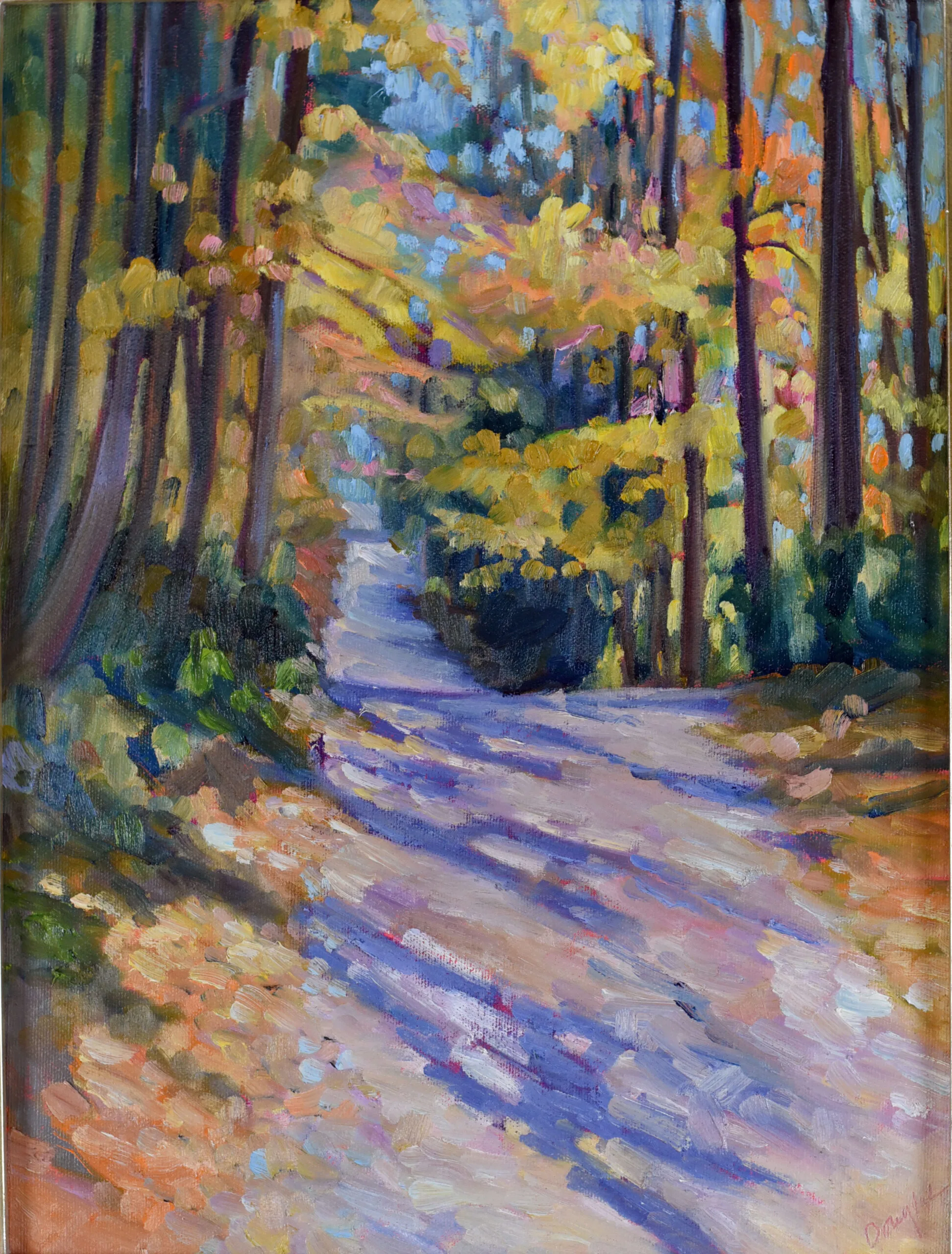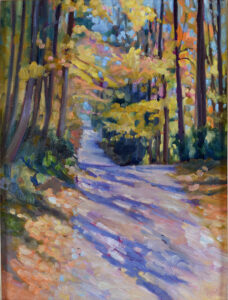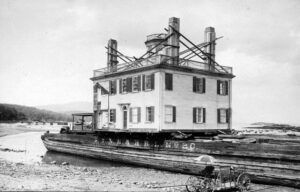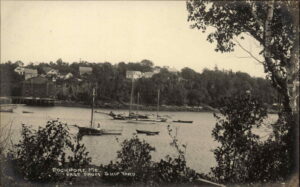This evening marks the end of my 2024 gallery season. I’ll be celebrating with a reception for my current workshop students from 4-6, and I’d love to see you. On Saturday, I’ll dismantle the gallery, and on Sunday, I’ll head west for the 20th Annual Sedona Plein Air Festival.
Among my end of the year reflections is the realization that our stellar autumn is balanced by simply ghastly weather elsewhere. There’s been horrific loss of life and property during hurricane season and a nasty heat wave in the west.
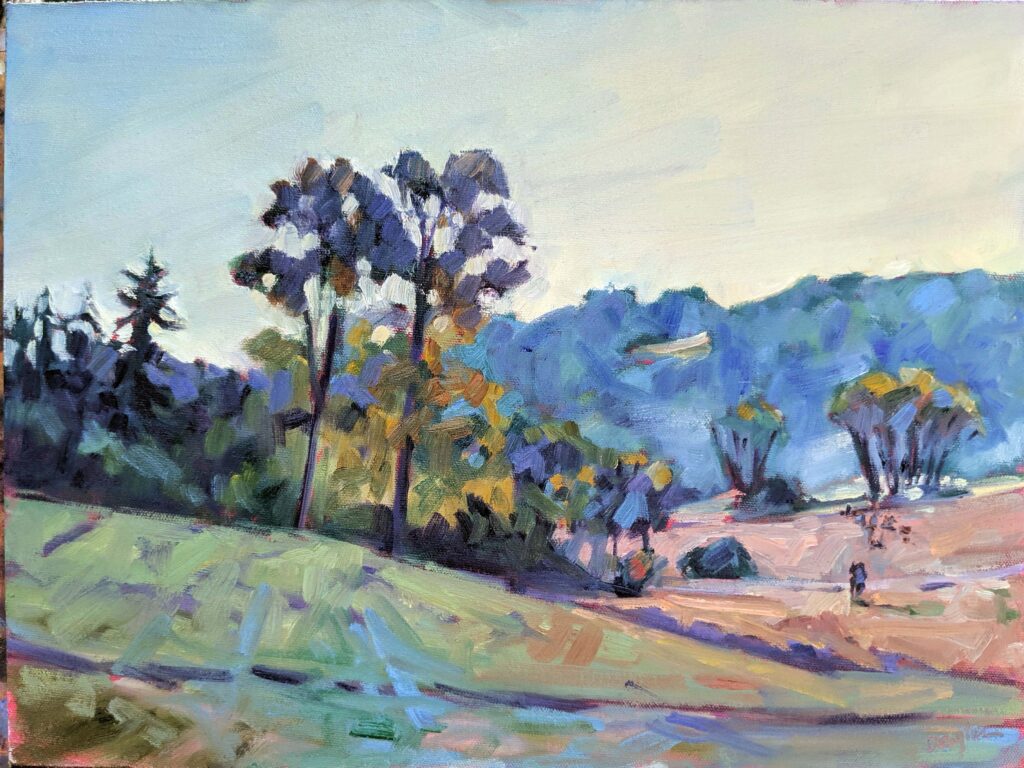
Although there’s a definite nip in the air most mornings, this autumn has been glorious in the northeast. The dryness has meant that the tapestry of color has emerged early and brilliantly. We’re at that beautiful moment when leaves range from lush greens to amber, crimson and gold. The air is crisp and invigorating and carries a whiff of woodsmoke and fallen leaves.
None of that should preclude my praying for my Southern friends.
It’s cold enough that I’ve started lighting the woodstove at night, but we haven’t had a frost. And it’s apple season, so I’m baking an apple cake for tonight’s opening. It’s my mother’s recipe, and it’s reliably good.
Why am I closing now, when things are so lovely here? I’ll get back from my perambulations just before the holidays, during which we humans never seem to rest. But just as nature needs a dormant season in which to rest, so do we Maine artists. We’ve been flapping hard all summer. I’ll take those few weeks before Thanksgiving to reassess and reflect.
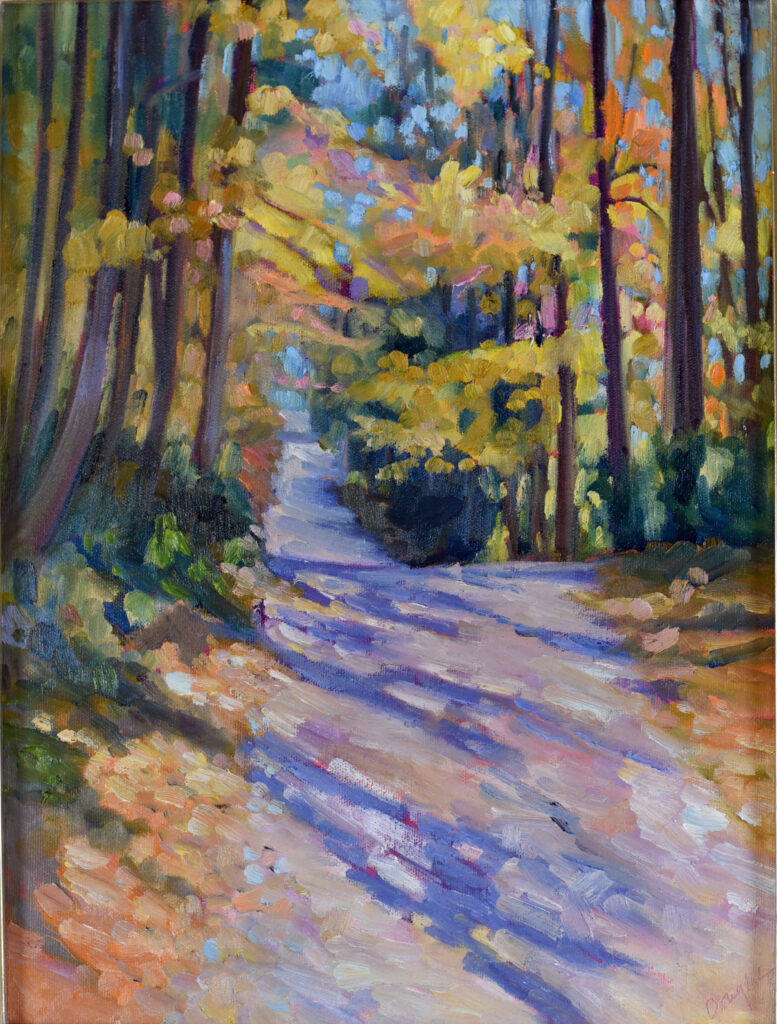
End of the year reflections
“Work smarter, not harder,” is something I’ve never really understood. I’ve worked as intelligently and as hard as I could. However, this year I turned 65. Although I have no intention of retiring, I’m finding my usual pace is more punishing than it was ten years ago.
That makes me evaluate what I’ve been doing. What benefits you and me the most? What is busy work? Do I have enough time to paint, or am I focused so much on teaching that I’m forgetting my first love? Is it fair to my family and friends to work nonstop every summer?
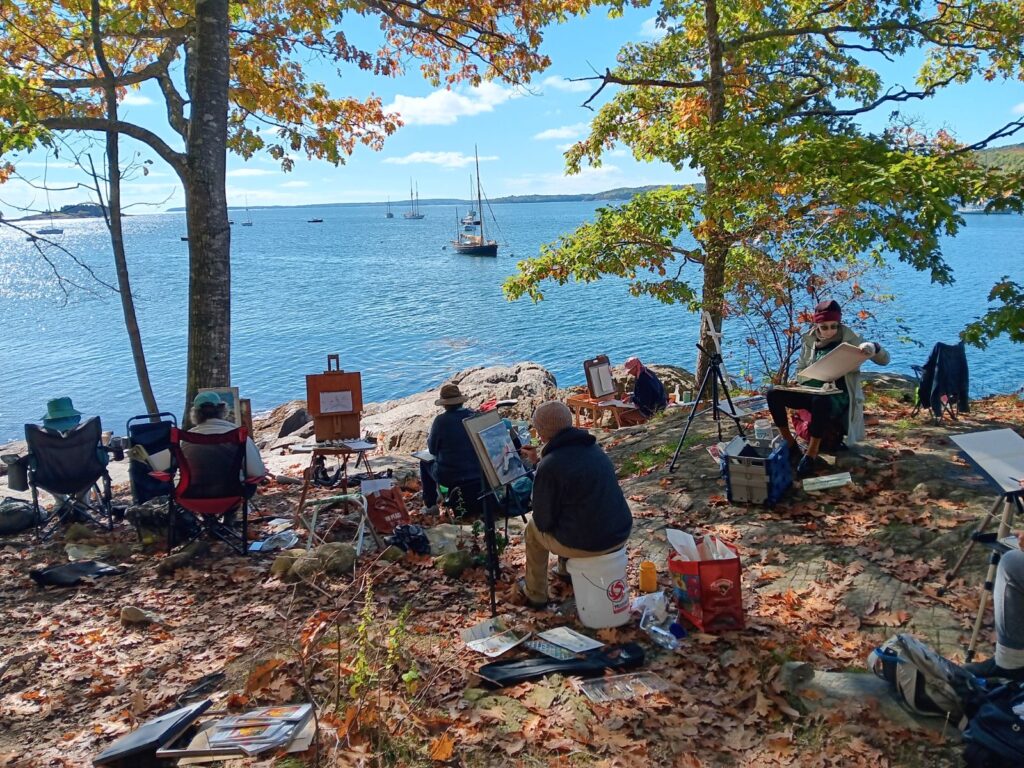
Every opportunity comes at a cost. For example, in 2024, I taught a lot, but that meant I didn’t do many openings. Traffic in my gallery suffered. I need to do a cost-benefit analysis of each aspect of my business.
By the way, none of this end-of-the-year reflection means I’m cutting back on my blog. I get a lot of joy out of writing it and knowing it helps so many people.
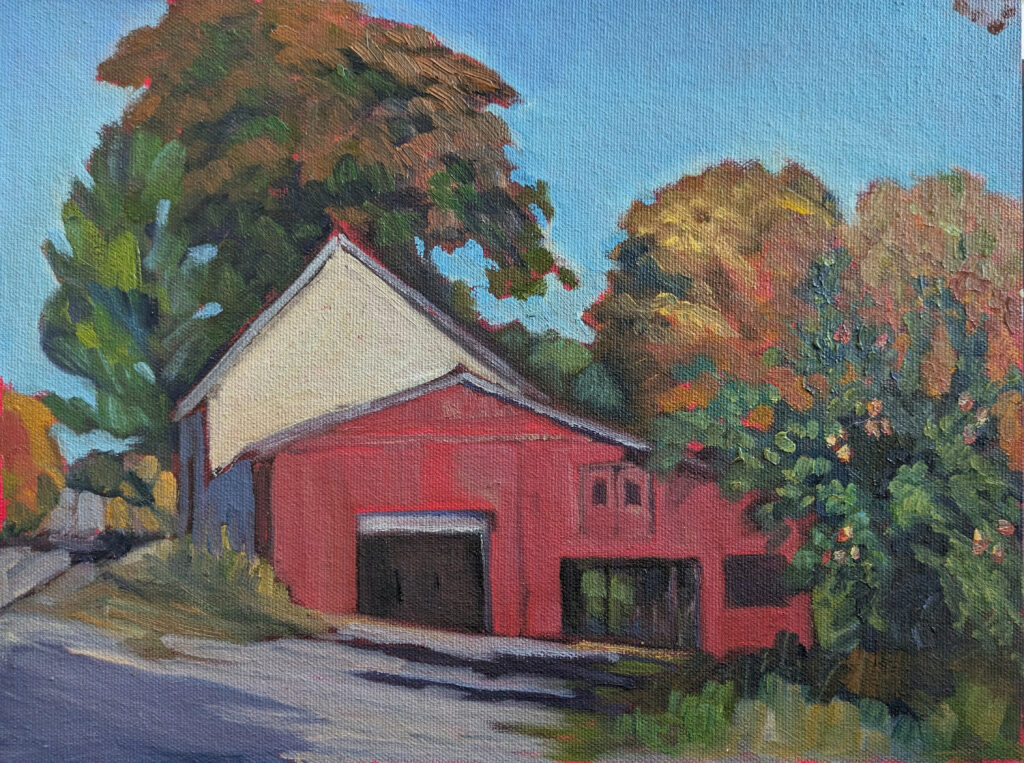
How about you?
End of the year reflections are a great tool. If you finished this plein air season without painting enough, you can plan time in your schedule to paint. If you keep doing other things instead, you can join a class or group to hold you accountable. If your spouse keeps interrupting you, you can use the winter months to get him involved in his own hobby. (Just kidding, honey.)
But, really, come out tonight
Student show
Richards Hill Gallery
394 Commercial Street
Rockport, ME 04856
4-6 PM
Friday, October 11, 2024
Reserve your spot now for a workshop in 2025:
- Advanced Plein Air Painting, Rockport, ME, July 7-11, 2025.
- Sea and Sky at Acadia National Park, August 3-8, 2025.
- Find Your Authentic Voice in Plein Air, Berkshires, MA, August 11-15, 2025.
- Immersive In-Person Fall Workshop, Rockport, ME, October 6-10, 2025.

